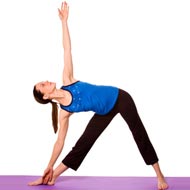- Sun Salutation
- Headstand
- Hand to Foot Pose
- Lion Pose
- Head to One Knee Pose
- Head to Knees Pose
- Camel Pose
- Sage Marichi Twist Pose
- Half Lord of the Fish Pose
- Inverted Leg Stretch Pose
- Shoulder Stand
- Plough Pose
- Inclined Plane
- Boat Pose
- Fish Pose
- Wheel Pose
- Bridge Pose
- Downward Facing Dog Pose
- Cobra Pose
- Bow Pose
- Locust Pose
- Eagle Pose
- Peacock Pose
- Crow Pose
- Corpse Pose
- Yoga Balance Asanas
- Yoga Asanas For Spine
- Yoga Asanas in Chair
- Basic Yoga Asanas For Stomach
- Yoga Asanas For The Neck
- Yoga Asanas For Depressed
- Yoga Asanas For Beginners
- Sequencing Yoga Asanas
- One Legged King Pigeon Pose - Eka Pada Rajakapotasana
- Reclining Bound Angle Pose - Supta Baddha Konasana
- Eight Angle Pose - Astavakrasana
- Hand Clenching
- Side Crane Pose - Parsva Bakasana
- Ankle Rotation
- Circle pose - Mandalasana
- Dolphin Plank Pose
- Half Frog Pose - Ardha Bhekasana
- Four-Limbed Staff Pose - Chaturanga Dandasana
- Extended Puppy Pose - Uttana Shishosana
- Supported Headstand - Salamba Sirsasana
- Pendant Pose - Lolasana
- Shoulder-Pressing Pose - Bhujapidasana
- Ankle Bending
- Wrist Bending
- Standing Half Forward Bend
- Side-Reclining Leg Lift
- Standing Yoga Seal
- Shiva Twist
- Upward Salute
- Intense Side Stretch Pose
- Wild Thing
- Great Hand Posture
- Upward Bow
- Warrior Seal
- Spread Leg Forward Fold
- Legs-Up-the-Wall Pose
- King Pigeon Pose
- Arm Pressing Posture
- Upward-Facing Dog
- Crocodile Pose
- Feathered Peacock Pose
- Reclining Angle Pose
- Reclining Hero Pose
- Half Headstand Pose
Technique Of Inverted Triangle Pose & Health Benefits
'Parivritta' in Sanskrit means 'to turn around' and 'trikona' means 'three angles', hence the name. The inverted triangle pose is usually practiced after performing Trikonasana (Triangle Pose).
The pose can be especially challenging for beginners because it needs a lot of concentration and focus. This is because when performing the pose, the movements have to be very precise in order to execute the pose correctly.
Inverted triangle pose
The inverted triangle pose or Parivritta Trikonasana is one of the more difficult postures for beginners as well as advanced practitioners. This is probably because this posture works on different levels. However, practicing this pose is worth the results it gives. It includes stretching and strengthening of the back and legs, the opening of the chest, and improving balance. It is similar to Utthita Trikonasana (Revolved Triangle Pose) but the front of the pelvis is shifted from the frontal plane to be almost parallel to the floor. Apart from being an excellent standing posture, it is also a great pose to improve your balance.
Steps
The inverted triangle pose steps are as follows:
- To begin this pose, you should first come to the "Adho Mukha Svanasana" (Downward Facing Dog Pose).
- Once you assume the Downward Facing Dog Pose, move your right foot to about a meter in front of you.
- Then, keep your hands at the sides of the foot that is in front. Let the heel of the forward foot bear the weight of your body. Your upper body should be raised till the back straightens. You will be able to check this by the groove that appears in the middle of your lower back. Without moving your weight or altering your posture, diagonally twist your left foot on the heel to the floor.
- Use your right hand to hold onto the underside of your lower leg; you can also hold your ankle. Make sure that your lower back bears your weight so that there is not much weight resting on your right hand. Extend the leg which is forward and make sure that you do not twist your body or bend your back.
- With your right hip extended and your back straight, set your eyes at a certain point on the floor and quietly breathe in and out. Push your left hand against your leg (or your ankle, if you are holding your ankle) and turn your upper body up and to the right. Try and let your back support as much of the weight as possible.
- If you are not able to twist any more, stretch your right hand up.
- Then let your head twist up and to the right. Look up along the sides of your arms and stretch your neck up. The better you perform this exercise the larger the triangle will be between your side, your arm and the leg planted in front.
- Once your complete the steps come back to the Downward Facing Dog Pose and repeat the pose with the left leg brought in forward.
Precautions
Some of the inverted triangle pose precautions include:
- Avoid this pose if you suffer from diarrhea, headaches and low blood pressure.
- If you have a heart conditions, you should perform the pose against a wall and place your arm on your hip.
- If you have high blood pressure you should turn your head so as to look down in the final position.
- Avoid turning your head to look up if you have a neck problem. Continue to look in front and stretch your neck and keep it upright.
Although this pose offers plenty of benefits there are some things you need to be careful about. If you are not sure of the pose, do not try to perform it on your own. Always practice it under that guidance of an experienced and qualified trainer. Also make sure that you get checked by a doctor and get his approval before performing the pose.
Beginner's tip
A good tip for “The Inverted Triangle Pose” is to keep a narrower stance when trying this pose, which makes it easier to perform. Another tip is to brace the back of the torso or the heel against the wall to take care of the unsteadiness.
Benefits to the body
The benefits to the body by practicing this pose are many:
- Strengthens and stretches the ankles, knees and thighs.
- Stretches the spine, chest, shoulders, calves, hamstrings, groins and hips.
- Stimulates the organs of the abdomen.
Therapeutic Applications
The therapeutic applications include the following:
- Improves digestion.
- Helps bring relief to the symptoms of menopause.
- Brings relief to backache, particularly during the second trimester of pregnancy.
- Helps with sciatica, osteoporosis, neck pain and infertility.
- Helps with anxiety.
- Deals with flat feet.
- Improves the sense of coordination and equilibrium.
Variations
Inverted triangle pose variations can be performed if an individual has certain physical limitations that prevent him or her from performing the posture. Variations can also be performed to go deeper into the pose and make it more challenging.
- One variation is to stretch your arm behind the ear and keep it parallel to the ground, rather than stretching it to the ceiling.
- If you find it difficult to comfortably touch the ground with the finger tips or with the bottom hand, you can use a block to support the palm.
- You can perform the pose close to a wall for balance. Begin by facing the wall and twist in such a way that you face away from it. Your rear leg should be close to the wall when you start. Another way to perform it is keep the rear heel at the point where the floor and wall meet.
Preparatory Poses
Some Preparatory Poses for inverted triangle pose include:
- Baddha Konasana (Bound Angle Pose)
- Uttanasana (Standing Forward Bend )
- Utthita Trikonasana (Extended triangle pose)
- Virabhadrasana II (Warrior II Pose)
- Virasana (Hero Pose)
- Vrksasana (Tree Pose)
Follow up poses
Some of the follow up poses for inverted triangle pose include twists, seated forward bends and standing poses.



